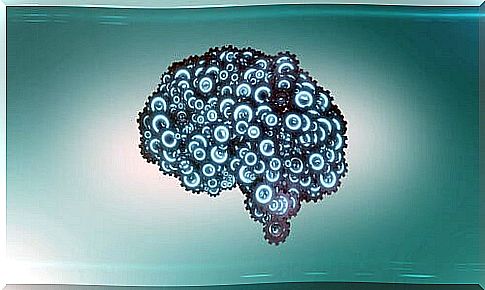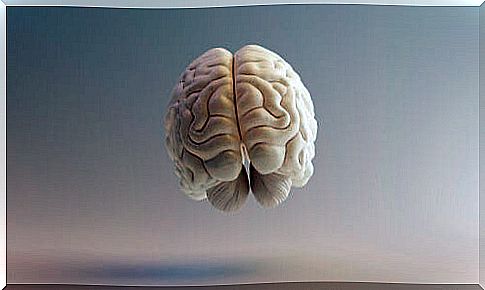Spearman’s Bifactorial Theory Of Intelligence

When talking about intelligence and its scientific study, we cannot omit, among others, the name of Charles Spearman. His studies provided a wealth of information and ideas for future thinkers. Why was Spearman’s bifactorial theory so important to the study of intelligence and psychometric tests?
Intelligence has been scientifically studied and conceptualized by different thinkers. Among them Charles Spearman, who coined the term general intelligence in 1904 from Galton’s studies.
Charles Spearman (1863 – 1945) was a London-born psychologist, a disciple of the father of experimental psychology, Wilhelm Wundt (1832 – 1920) and influenced by the works of Francis Galton (1822 – 1911).
He was the founder of the “London School” of Psychology at the University College of London (UCL), where, along with many of his students, he put experimental psychology into practice during the first decades of the 20th century.
Spearman’s bifactorial theory
Spearman’s bifactorial theory proposes a system where intelligence is broken down into factors, the general factor (g) and the specific factors (s) .
Spearman stated in 1923, with his Bifactorial Theory of Intelligence, that the academic performance of school-age children was correlated with the result they obtained in sensory tests that he himself chose and applied to them. Thus concluding that general intelligence could be measured with the capacity for sensory discrimination, as previously proposed by Galton.
Within the scientific study of intelligence today, it is difficult to approach the subject without talking about Spearman’s Bifactorial Theory, since it laid the foundations for a new stage of study of it.

General intelligence
Spearman defined general intelligence as ” the ability to infer relationships and from them adduce correlates. “
He also spoke of a neural phenomenon g , which “ is considered in his thesis as a potential energy available throughout the brain and postulates that this energy differs quantitatively between individuals and would be genetically determined (Spearman 1927 pp 124, mentioned by Rosa María Bonastre Rovira in ” General intelligence (g), efficiency and nerve conduction speed index: an empirical approach , 2004″).
That is, it tells us about a part of the intelligence that intervenes in many activities, however, it does not specialize in any of them. Unlike specific actors or factors, which do.
Specific factors
Also known as s factors, they are those that correspond to different abilities such as: mechanical, verbal, numerical, spatial activities, among others.
So, Spearman’s bifactorial theory tells us that if a school-age minor has good scores in one of the subjects, they will be more likely to get good scores in the rest of them as well.
Since in these evaluations general intelligence or “g” intervenes. However, this does not guarantee that the minor will excel in any skill, discipline or specific area in the future, since for that it is necessary that the factors s intervene .
Contributions to the study of intelligence
From Spearman’s bifactorial theory and the different criticisms it received, other ideas arose to try to scientifically understand the phenomenon of intelligence.
Some of these criticisms were related to cultural bias, economic position, geographic location of the subject’s home or academic level. Since Spearman’s bifactorial theory does not take these factors into account and genetics cannot explain everything, new proposals and models emerged.
Other definitions
Some other definitions that have seemed relevant over time are from thinkers such as: (mentioned in “ General intelligence (g), neuuural efficiency, and the nerve conduction speed index: an empirical approach” by Dr. Rosa María Bonastre Rovira , 2004). Hebb DO (1949 in The organization of the behavior ) states that ” intelligence is the potential of an animal organism to learn and adapt to its environment.”
Stemberg (1985 in Beyod IQ: A triarchic theory of human intelligence ) defines it as follows: ” Intelligence explains the differences that we observe between people to solve problems. “
Gottfredson LS (1997 in Why g matters: The complexity of everyday life ) states that intelligence “ is a very general mental faculty that, among other things, implies the ability to react, plan, solve problems, think abstractly, understand complex ideas, learn fast and learn from experience ”.
Howard Gardner (1999 in The prefrontal cortex: Executive and cognitive functions ) recognizes intelligence as ” a biopsychological potential for information processing to solve problems or create valuable products for a given culture or community.”
These are some of the most important contributions about intelligence, and as we can see, they are related to conflict resolution and adaptation to the environment. Which indicates that they no longer only take into account the genetic conditions of the subjects.

Applications in psychology
In psychology, there are psychometric tests for almost all the dimensions that have aroused interest. Spearman’s bifactorial theory, although not highly valued by some, has great relevance. From these studies, others emerged that were shaping different psychometric tests of intelligence that we use today.
Today, psychometric tests based on Spearman’s bifactorial theory are still administered. For example, the test Raven Progressive Matrices , Test D-48 dominoes and test the g factor Cattell .









